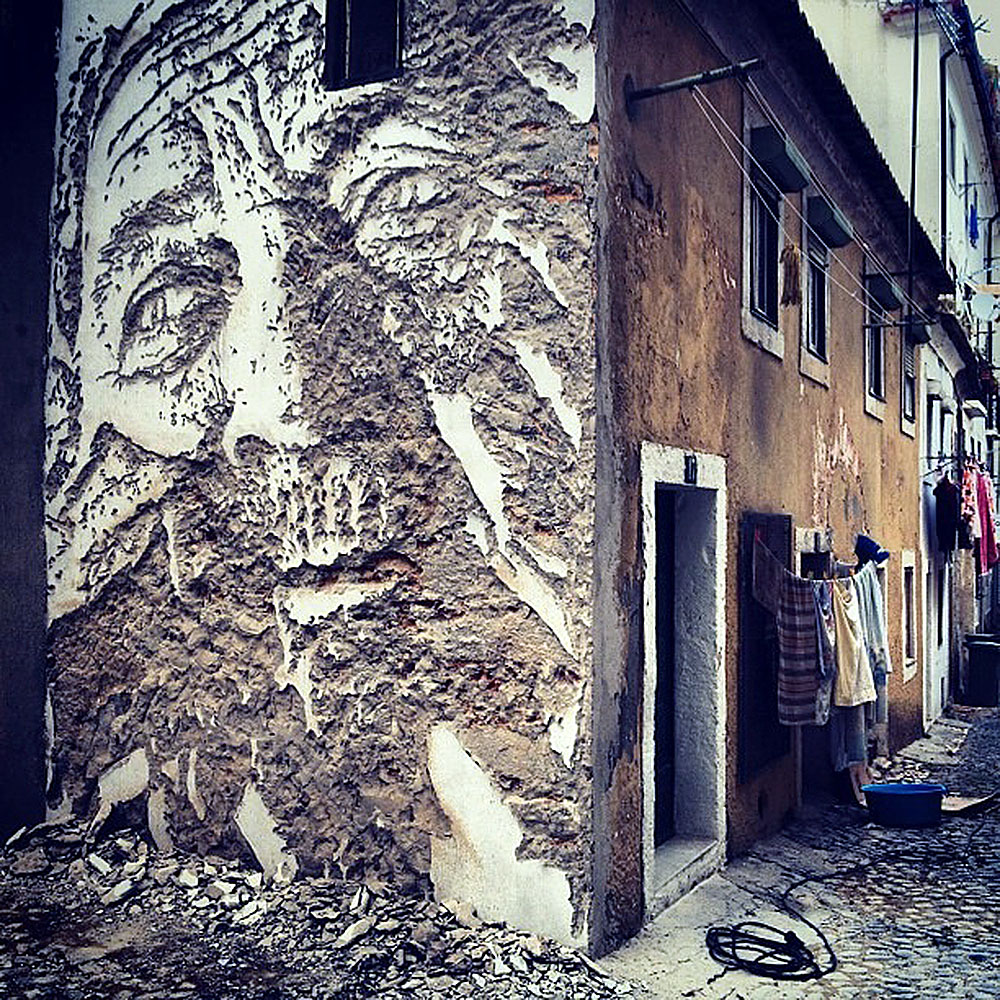
So, we broke down and did the touristo thing. We took a walking tour of Porto on our last day. Just what we needed right? More walking? The WORST tour started at a park filled with homeless people and went downhill from there.
OK, so now that we have your attention, it was, in all honesty, a GREAT walking tour! It’s just called Worst Tours. Weird name, so here’s the deal, verbatim from their brochure.
Three architects facing sudden economic destruction refuse leaving town and imagine the least likely walking tours. Porto, the big picture, good and bad architecture, ‘Tascas’, politics, alleys, tiny associations, abandoned buildings, and great discussions on very partial points of view.
You can check them out here: http://theworsttours.weebly.com

The cost of the tour is by donation. They have several variants and we got the ‘Islands’ in Porto. It was a fun afternoon with a small group of people (the 4 Irish guys who started with us just wanted to drink so we lost them early on), led by a very passionate woman named Gui, which is short for some longer version like Gui<something>-Margerita. We’ll stick with Gui. In the 3+ hours, we got introduced to more than a few abandoned homes and commercial buildings, a graffiti squatter-art concrete wasteland surrounded by very impressive art workshops, and Porto’s islands. Along the way, we learned about why Porto’s architecture is the way it is, why they have all these abandoned buildings, and the destruction that’s happening to a lot of Portos’ cultural uniqueness due to politics, optics, economic resurgence, and massive tourist/foreign buyer influx. The empty homes stay that way, sometimes for decades, while the family owners wait for improved economic times. There’s frustration happening in that the populace wants these places freed up, so people have a place to live. Private owners have a long history of rights and there’s a whole bunch of politics in the middle. Can you spell empty homes tax?
We stopped for a few beers as well. Our kind of tour!


It’s a side of Porto that most people don’t see, and we found it very interesting. One of the unique things here are the islands that came out of the 19th century industrial era when Porto was expanding, and factories were cropping up. During that time, a factory owner, having need of labour, would purchase a home or two on the street front. The homes look like one solid building from the outside but the ‘door’ in the middle is an entrance to a very narrow corridor that is lined with small single-story row houses 4 or 5 on each side. These would house the workers. When the factories went out of business or moved on, the homes with the row houses sat empty for many decades. They eventually became cheap rental housing when new owners bought the homes and turned the row houses into nicer mini-apartments. Today, if you are lucky, you can catch a glimpse of these narrow communities when a gate is open. They house lower income families, maybe 5 to 10, and they become a larger social group isolated from the main street outside. Hence, islands. People, our tour guide included, are trying to save these communities as they are in danger of being turned into short term rentals like airBnBs.


The graffiti-art area was also interesting and some of it quite gorgeous. One of the pieces there in this concrete wasteland is an early work done by a guy named Vhils, before he became famous as one of Portugals’ top artists.




There were some ‘comments’ by our guide about nationalism and racism etc. I did say she was passionate. While it’s not as obvious in Portugal as in some of the other European countries (and we certainly didn’t see any indication of this), Gui pointed out a ceramic frog in one of the store windows as we passed by. Apparently, this is to ward off the gypsies and keep them out of the store. She said there is still an undercurrent of dislike for the Romany folk that is very entrenched here. We found it quite hilarious that the frog was in a Chinese goods store.

So, there you have it, as the brochure said, the good, bad, and the ugly, at least in the core part of Porto. We didn’t get to the outer areas, which look very nice, the Douro Valley, or even the Atlantic unfortunately. The coastline looks fabulous and it would have been nice to do a walk out there. We did do a long walk along the river, over The Ponte Luis I to Gaia and back over the Ponte da Arrabida to Porto, from which you can see the Atlantic and the coast. On the way back, we stopped at the Crystal Palace on the south slopes of the city; beautiful gardens and walks overlooking the Douro River.
And lastly, we passed by the Harry Potter bookstore. Not that they specifically sell HP books (but probably do) but the architecture inside was used by J.K. Rowling for the HP movies. The Lonely Planet travel site rated it as the 3rd most beautiful bookstore in the world. There are so many people wanting to see this, that they charge to get in and look. There is no refund, but you can use the entrance fee towards a book. And that’s ok, if you are fluent in Portuguese. You can check it out here:
http://www.localporto.com/bookstore-world-porto-lello-irmao/
A nice bottle of Grahams LBV was purchased as well. We will definitely be back!



